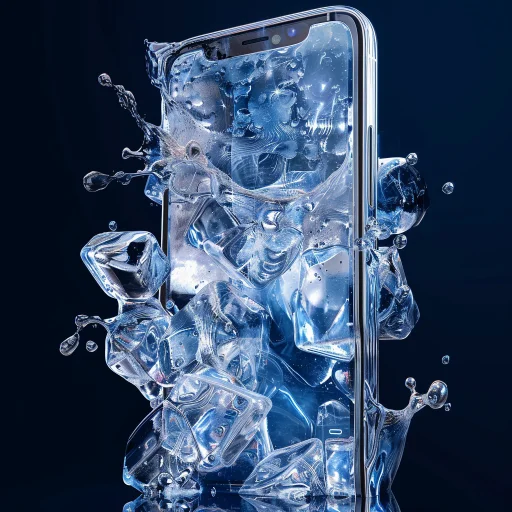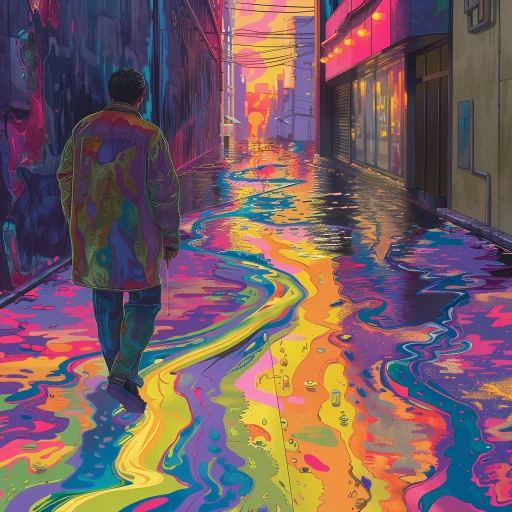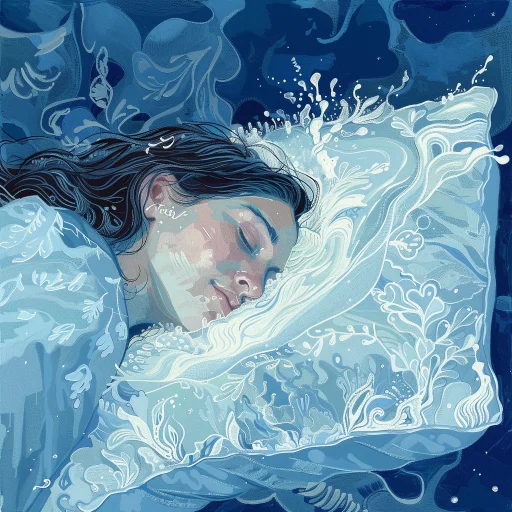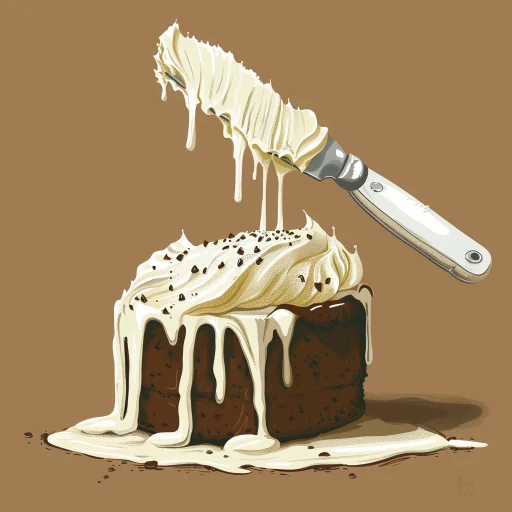Imagine your writing has the power to reach out and touch your reader’s senses.
This is the magic of tactile imagery, a technique that enriches the depth and emotional resonance of your words.
Mastering tactile imagery makes your stories more vivid, allowing readers to feel the textures and temperatures you describe.
Whether you’re an aspiring author or a freelance writer of any type, read on to discover exactly what tactile imagery is and how to use it.
What is tactile imagery?
Tactile imagery involves descriptions that evoke the sense of touch, drawing readers deeper into your writing by making them feel textures, temperatures, and physical sensations.
When a character treads on a frost-covered sidewalk, the reader can almost feel the icy crunch underfoot. This method invites the reader to experience the scene through the protagonist’s senses, enhancing engagement and adding a layer of realism.
The strategic use of tactile imagery builds mood and deepens a sense of emotional connection by creating a palpable atmosphere.
The softness of an old quilt can suggest comfort and nostalgia, while the sting of a sharp rock underfoot can evoke tension and urgency. These details do heavy lifting, shaping your reader’s emotional journey through effective and emotionally-engaging imagery.
How to use tactile imagery in writing
Incorporating tactile imagery is crucial for crafting engaging and realistic scenes.
It adds a tangible element to settings and character interactions, making abstract or distant scenes feel immediate and real.
In genres that thrive on evocative settings, such as horror or romance, tactile details can be particularly potent, turning cerebral experiences into visceral moments.
Tactile imagery also enriches character development.
How characters interact with their physical world—their reactions to a rough garment or a slick, icy surface—can reveal their personalities, backgrounds, and current states of mind.
These details offer subtle clues about their preferences and histories, allowing readers to infer deeper character traits without explicit exposition.
Finally, using tactile imagery invites the reader to experience your writing more personally and memorably.
It taps into the reader’s own sensory memories, connecting the fictional world to real-life experiences.
This connection is about more than just vivid storytelling – it’s about creating a palpable presence that readers can almost touch, transforming passive reading into an active, immersive experience that goes deeper than the surface level.
Examples of tactile imagery in writing
1. A Cardigan as Soft as a Cloud

“She wrapped the cardigan around her shoulders, its softness like a comforting cloud on a dreary day.”
This simile uses softness to evoke comfort and warmth, making the texture central to the reader’s sensory experience.
2. Cobblestones Rough Underfoot
“He stumbled down the ancient street, the cobblestones rough under his worn shoes.”
This imagery brings the uneven, hard texture of the cobblestones to life, enhancing the setting’s historic feel.
3. The Stiff Collar of a New Shirt
“The stiff collar of his new shirt chafed at his neck, a constant reminder of his discomfort.”
The stiffness of the collar is used here to symbolize discomfort, amplifying the character’s unease in his situation.
4. A Wall Cold and Unyielding
“She leaned against the wall, its surface cold and unyielding against her skin.”
The cold, hard description emphasizes the character’s loneliness and the harshness of her surroundings.
5. Warm Bread in Hand
“He held the warm bread, its crust crackling softly with each gentle squeeze.”
The warmth and texture of the bread convey a sense of homeliness and comfort, appealing directly to the reader’s sense of touch.
6. Raindrops Like Needle Pricks
“Raindrops felt like needle pricks on her bare arms as she dashed through the storm.”
This comparison vividly conveys the sharp, uncomfortable sensation of rain, drawing the reader into the urgency and discomfort of the scene.
7. Silk Sheets Sliding Smoothly
“As she turned in her sleep, the silk sheets slid smoothly over her skin.”
This description captures the luxurious, fluid feel of silk, contrasting it subtly with the character’s restless sleep.
8. Sand Grating Between Toes
“He walked along the beach, feeling the coarse sand grating between his toes.”
The texture of sand provides a direct sensory connection to the beach setting, making the scene more vivid and tangible.
9. Icy Wind Cutting Through Clothes
“The icy wind cut right through her clothes, making her shiver uncontrollably.”
This imagery effectively communicates the harshness and penetrating cold of the wind, enhancing the reader’s sense of the character’s physical discomfort.
10. Rough Bark Against Skin
“He leaned against the tree, its rough bark pressing uncomfortably into his back.”
The roughness of the tree bark enhances the sense of an unyielding natural environment, impacting the reader’s tactile imagination.
11. A Towel Damp and Heavy
“After the swim, he grabbed the towel, damp and heavy with seawater.”
The heaviness and dampness of the towel are palpable, reflecting the aftermath of a swim and the physical burden of the wet fabric.
12. Gloves Soft as Butter
“She slipped her hands into the gloves, soft as butter, a perfect shield against the morning chill.”
The softness of the gloves contrasts with the cold, adding a comforting tactile detail to her preparation for the day.
13. A Smartphone as Cold as Ice

“Her fingers recoiled as she touched the smartphone, its surface cold as ice.”
This simile effectively communicates the shock of cold, making the sensation palpable to the reader.
14. Leather Couch Cracking
“He sank into the old leather couch, which cracked under his weight.”
The sound and feeling of the cracking leather add depth to the depiction of an old, possibly neglected piece of furniture.
15. Wool Itchy Against Skin
“The wool sweater was itchy against her skin, making her wish for something softer.”
This sensory detail conveys discomfort, highlighting the character’s sensitivity and the texture of the wool.
16. Sticky Jam on Fingers
“She licked the sticky jam off her fingers, its sweetness clinging to her skin.”
The stickiness of the jam is tactile and vivid, adding a playful and intimate detail to the scene.
17. Mud Squelching Under Boots
“As they hiked, the mud squelched under their boots, making each step a laborious effort.”
The squelching sound and feel convey the challenge of walking in muddy conditions, adding realism to the trek.
18. Hot Coffee Mug Warming Hands
“He wrapped his hands around the hot mug of coffee, its warmth seeping into his chilled fingers.”
The warmth of the mug is a comforting sensation, contrasting with the cold and providing a small, personal comfort.
19. Velvet Curtain Soft to the Touch
“She drew the velvet curtain aside, its softness luxurious under her fingertips.”
The softness of the velvet adds a touch of luxury and sensuality to the setting, making the action more than just functional.
20. Frost Numbing Fingers
“The frost numbed her fingers as she scraped it off the car windshield.”
This detail conveys the biting cold of frost, emphasizing the physical effort and discomfort involved in the task.
21. A Street as Slick as Oil

“The street was as slick as oil after the rain, and she tread carefully to avoid slipping.”
This simile enhances the hazard of the wet street, making the reader almost feel the slippery surface.
22. Crisp New Dollar Bills
“He flipped through the crisp new dollar bills, each one feeling firm and fresh in his hands.”
The crispness of the new bills conveys a sense of freshness and value, adding a tactile dimension to the action of handling money.
23. Gravel Crunching Underfoot
“He walked down the driveway, the gravel crunching satisfyingly underfoot.”
The crunching sound and feel of gravel evoke a distinct sensory experience, grounding the character in the scene.
24. Dough Sticky and Pliable
“She kneaded the dough, its sticky and pliable texture yielding under her strong hands.”
The tactile qualities of the dough engage the reader, illustrating both the process of baking and the physicality involved.
25. Ice Cream Melting on the Tongue
“The ice cream melted on her tongue, its cold sweetness enveloping her senses.”
This sensation of melting ice cream is immediately relatable, evoking both taste and touch in a refreshing experience.
26. Bath Water Lukewarm
“He stepped into the bath, the water disappointingly lukewarm against his tired muscles.”
The temperature of the water contrasts with his expectation, directly affecting his physical comfort and mood.
27. Cat’s Fur Silky and Smooth
“As she petted the cat, its fur was silky and smooth, comforting under her stroking hands.”
The smoothness of the cat’s fur offers a soothing tactile interaction, enhancing the calm and intimate moment.
28. Wet Hair Clinging to Skin
“After the dive, her wet hair clung to her skin, cold and slightly uncomfortable.”
This detail enhances the physical sensation of being in water, making the scene more realistic and vivid.
29. Brick Rough and Unforgiving
“He brushed against the brick wall, its rough and unforgiving texture scraping his arm.”
The tactile imagery here enhances the harshness of the urban environment, influencing the reader’s sensory perception of the scene.
30. Sun-Warmed Rock Comforting
“She sat on the sun-warmed rock, its heat comforting against her cool skin.”
The warmth of the rock contrasts with the surrounding air, providing a natural source of comfort and warmth.
31. Newspaper Brittle in Hands
“He unfolded the newspaper, its pages brittle and dry in his hands.”
The texture of the newspaper conveys its age or the effect of the environment, adding a layer of detail to the morning routine.
32. Sweat-Dampened Shirt Clinging
“During the hike, his shirt became sweat-dampened, clinging uncomfortably to his back.”
The sensation of the damp shirt enhances the physical exertion and discomfort of the hike, making the reader empathize with the character.
33. Pillow Cool Against Cheek

“She turned the pillow over, the cool side comforting against her cheek.”
This simple tactile experience is universally relatable, enhancing the sense of relief and comfort in the scene.
34. Broken Glass Sharp and Dangerous
“He carefully picked up the broken glass, its sharp edges threatening and dangerous.”
The sharpness of the glass adds a tactile danger to the scene, heightening the tension and caution.
35. Chalk Dust Soft on Fingers
“As she wrote on the blackboard, the chalk dust was soft on her fingers.”
The texture of chalk dust contrasts with the hard surface of the blackboard, subtly playing into the sensory experience of teaching or learning.
36. Rain Soaking Through Clothing
“The rain soaked through her clothing, each layer becoming heavier and more uncomfortable.”
The progression of the rain soaking through clothing is palpable, adding to the misery and discomfort of being caught in a storm.
37. Hairbrush Smooth Through Hair
“He ran the hairbrush through his hair, its bristles smooth and efficient.”
The smoothness of the brush through hair conveys a routine grooming experience, familiar and tactile.
38. Feathers Light and Ticklish
“She touched the feathers in the pillow, light and ticklish against her fingers.”
The lightness and ticklish quality of feathers add a playful and gentle tactile sensation to the interaction.
39. Ashes Fine and Powdery
“He sifted the ashes through his fingers, fine and powdery, leaving a ghostly residue.”
The texture of ashes is distinctly conveyed, emphasizing loss or the aftermath of an event.
40. Soap Slipping from Hands
“The soap slipped from her hands, its surface slick and elusive.”
The slickness of the soap adds a dynamic element to an otherwise mundane activity, injecting a moment of frustration.
41. Fresh Snow Crunching

“She stepped into the fresh snow, it crunching audibly under her boots.”
The crunching snow underfoot is a classic winter sensation, vividly capturing the season’s essence.
42. Suede Soft and Supple
“He admired the suede jacket, its texture soft and supple under his fingertips.”
The softness and suppleness of suede convey luxury and comfort, appealing directly to the reader’s sense of touch.
43. Knitted Scarf Itchy Around Neck
“She adjusted the knitted scarf around her neck, its texture slightly itchy.”
The itchiness of the scarf introduces a slight discomfort, adding realism to the character’s sensory experience.
44. Pasta Dough Elastic and Tough
“As he rolled the pasta dough, it felt elastic and tough, resisting his efforts.”
The texture of the dough provides insight into the cooking process, making the physical effort involved more tangible and relatable.
45. Pencil Grip Firm and Secure
“He held the pencil, its grip firm and secure, as he sketched the rough outline.”
The firmness of the pencil grip enhances the control and precision in the sketching process, making the action feel more deliberate.
46. Leather Belt Stiff Around Waist
“She fastened the leather belt around her waist, its stiffness constraining yet secure.”
The stiffness of the belt conveys a sense of restriction, enhancing the feeling of being dressed for a demanding occasion.
47. Frosting Smooth Under Spatula
“She smoothed the frosting over the cake, its texture creamy and yielding under the spatula.”
The smoothness of the frosting adds a tactile pleasure to cake decorating, highlighting the care and skill involved.
48. Wet Paint Sticky to Touch
“He touched the bench, not realizing the paint was still wet; it was sticky and slightly tacky against his fingers.”
The stickiness of the wet paint is a sensory surprise, emphasizing the annoyance and the unfinished state of the work.
49. Carpet Soft Beneath Feet
“As she stepped onto the carpet, its softness was a soothing relief from the hard wooden floor.”
The soft carpet provides a contrast to the hard floor, offering a comforting tactile experience.
50. Jacket Zipper Cold and Metallic
“He zipped up his jacket, the zipper cold and metallic against his fingers in the frosty air.”
The cold, metallic feel of the zipper highlights the chilly environment, enhancing the sensory detail of getting dressed for cold weather.
51. Onion Skin Papery and Delicate
“She peeled the onion, its skin papery and delicate, crumbling slightly between her fingers.”
The papery texture of the onion skin is distinctly tactile, adding to the sensory realism of cooking.
52. Hot Sand Burning Feet

“She walked across the beach, the hot sand burning her feet as she hurried to the cooler water.”
The burning sensation of the sand vividly captures the heat of the beach, contrasting sharply with the cool water.
53. Guitar Strings Tight Under Fingers
“He strummed the guitar, the strings tight and resonant under his fingers.”
The tightness of the guitar strings conveys the tension and potential for music, adding a tactile aspect to the playing experience.
54. Tea Kettle Smooth and Hot
“She poured the tea, the kettle smooth and hot to the touch, steam rising in gentle swirls.”
The smooth, hot surface of the kettle complements the comforting ritual of pouring tea, adding warmth to the scene.
55. Hail Pelting Skin Painfully
“The hail pelted her skin painfully as she ran for cover, each hit sharp and sudden.”
The painful pelting of hail brings an aggressive tactile sensation to the scene, emphasizing the severity of the storm.
56. Wool Blanket Heavy and Warm
“He wrapped the wool blanket around him, its weight heavy but warm, shielding him from the cold night air.”
The heaviness and warmth of the blanket convey comfort and protection, making the blanket a central tactile element in the scene.
57. Book Pages Thin and Smooth
“She flipped through the book, the pages thin and smooth under her quickly moving fingers.”
The smoothness of the pages enhances the tactile pleasure of reading, emphasizing the physical aspect of engaging with a book.
58. Ice Slippery Under Boots
“He cautiously walked on the icy path, the surface slippery and treacherous under his boots.”
The slipperiness of the ice adds a layer of danger and challenge to the scene, making the setting more interactive and vivid.
59. Pillowcase Cool and Silky
“At night, she appreciated the cool, silky pillowcase against her cheek, soothing her into sleep.”
The silky texture of the pillowcase adds a luxurious touch to her bedtime routine, enhancing the comfort of the scene.
60. Moss Soft and Damp
“He sat on the log covered in moss, its texture soft and damp, a natural cushion in the forest.”
The soft, damp moss contrasts with the hard log, providing a tactile description that enhances the natural setting.
61. Basketball Rough and Grippy
“He dribbled the basketball, its surface rough and grippy, perfect for the quick maneuvers of the game.”
The roughness and grip of the basketball are essential for the play, adding a tactile dimension to the sports scene.
62. Raincoat Slick and Waterproof
“She buttoned up her raincoat, its surface slick and waterproof, ready to repel the downpour.”
The slickness of the raincoat emphasizes its functionality, adding a tactile element to the preparation for bad weather.
63. Cinnamon Bark Rough and Fragrant
“He held the cinnamon bark, rough and fragrant, ready to be ground into spicy powder.”
The rough texture and aromatic quality of the cinnamon bark add sensory depth to the culinary preparation.
64. Linen Dress Light and Airy
“She wore a linen dress, its fabric light and airy, ideal for the warm, breezy day.”
The light ness and airiness of the linen dress convey ease and comfort, perfect for a summer setting.
65. Frosting Knife Sticky with Sugar

“He cleaned the frosting knife, sticky with sugar, after finishing the cake decoration.”
The stickiness of the knife after decorating conveys the tactile aftermath of a baking task, adding a realistic touch to the activity.
66. Leaves Crunchy Underfoot
“As she walked through the park, the leaves were crunchy underfoot, marking the arrival of fall.”
The crunchiness of the leaves underfoot is a quintessential autumn sensation, vividly marking the change of the season.
Are you ready to use tactile imagery in your writing?
Now that you’ve explored the vibrant world of tactile imagery through these 66 distinct examples, the next step is yours to take.
Begin by weaving tactile details into your own writing, transforming mundane scenes into tangible moments that resonate deeply with your readers.
Notice the textures, temperatures, and sensations in your daily life and think about how they influence your emotions and reactions.
Then, channel these observations into your stories, poems, or articles.
Each piece of writing is an opportunity to connect more profoundly with your readership, to make them feel right there, as if they lived the words on the page for real..
So, grab your pen or power up your laptop, and start crafting sensory-rich experiences that leap off the page!
Embrace the power of tactile imagery and watch your writing come alive.

